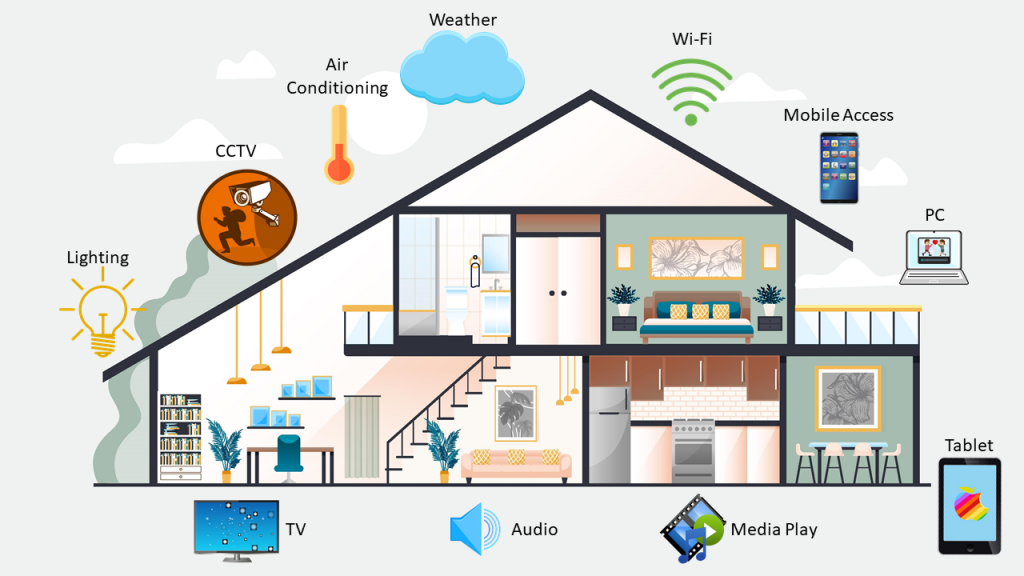In today’s digital age, the concept of a smart home has become increasingly popular. A smart home is equipped with devices and systems that can be controlled remotely, automated, and interconnected to enhance convenience, security, energy efficiency, and overall living experience. From intelligent thermostats and voice-activated assistants to automated lighting and security systems, smart home technology has revolutionized the way we interact with our living spaces. Let’s delve into the world of smart homes, explore their benefits, and discover how they are transforming the way we live.
What is a Smart Home?
A smart home refers to a residence that utilizes technology to automate and control various aspects of the home environment. It involves the integration of devices, sensors, and systems that can be monitored and controlled remotely through smartphones, tablets, or voice commands. These interconnected systems and devices work together to create a seamless and personalized living experience.
Benefits of a Smart Home
- Convenience and Efficiency: Smart home technology offers unparalleled convenience by automating routine tasks and allowing remote control of various devices. From adjusting the thermostat before you arrive home to preheating the oven or turning off lights with a voice command, smart homes simplify daily activities and save time.
- Energy Efficiency: Smart homes contribute to energy conservation by optimizing energy usage. Smart thermostats, for example, can learn your preferences, adjust temperature settings based on occupancy, and provide energy consumption insights. Automated lighting systems can also turn off lights when rooms are unoccupied, reducing unnecessary energy usage.
- Enhanced Security: Smart home security systems provide advanced features such as remote surveillance, motion detection, and real-time alerts. Homeowners can monitor and control security cameras, locks, and alarms from anywhere, offering peace of mind and an additional layer of protection for their property.
- Home Safety: Smart home technology extends beyond security to enhance safety. Smoke detectors, carbon monoxide detectors, and water leak sensors can be integrated into the system to detect potential hazards and send notifications, allowing for swift action to mitigate risks.
- Entertainment and Connectivity: Smart homes offer seamless integration of entertainment systems, allowing you to control audio, video, and streaming services from a centralized interface. Devices like smart TVs, streaming boxes, and smart speakers can be connected to provide a customized and immersive entertainment experience.
- Aging in Place and Accessibility: Smart home technology enables older adults or individuals with mobility challenges to live independently and safely. Features such as voice-activated assistants, remote monitoring, and automated lighting and temperature control can enhance accessibility and provide assistance when needed.
Components of a Smart Home
- Voice-Activated Assistants: Devices like Amazon Echo with Alexa, Google Home, or Apple HomePod act as voice-activated assistants that can control various smart devices, provide information, and perform tasks through voice commands.
- Smart Lighting: Smart lighting systems allow remote control, scheduling, and automation of lights. They can be customized to adjust brightness, color, and ambiance according to personal preferences or specific scenarios.
- Home Security Systems: Smart home security systems include components like cameras, motion sensors, door/window sensors, and smart locks. These systems can be monitored and controlled remotely, providing real-time alerts and enhancing the security of the home.
- Smart Thermostats: Smart thermostats optimize energy usage by learning household patterns, allowing remote temperature adjustments, and providing energy consumption insights. They can adapt to occupancy, weather conditions, and user preferences to maintain comfort while minimizing energy waste.
- Home Entertainment Systems: Smart home entertainment systems integrate audio, video, and streaming services for a personalized and immersive experience. They can be controlled through a centralized interface or voice commands, creating a seamless entertainment ecosystem.
- Automated Appliances: Smart appliances, such as refrigerators, ovens, washing machines, and robotic vacuums, offer advanced features and remote control options for added convenience and efficiency.
Considerations for Smart Home Adoption
- Compatibility and Interoperability: When building a smart home ecosystem, it’s crucial to ensure compatibility between devices and systems. Choosing products that adhere to common industry standards and allow interoperability ensures seamless integration and avoids limitations in functionality.
- Privacy and Security: As with any connected technology, it’s important to prioritize privacy and security. Regularly update firmware, use strong passwords, and opt for devices with robust security features. Research manufacturers and choose reputable brands that prioritize data protection.
- Scalability and Future-proofing: Consider the scalability of your smart home system. As technology evolves, new devices and features will become available. Plan your smart home infrastructure with the flexibility to accommodate future upgrades and additions.
- User-Friendly Interfaces: Ensure that the smart home system you choose offers user-friendly interfaces and intuitive controls. The ability to monitor and control devices through a single app or voice commands simplifies the user experience.
Conclusion
Smart home technology has transformed the way we interact with our living spaces, offering convenience, energy efficiency, security, and enhanced living experiences. From automation and remote control to personalized customization, smart homes provide a seamless and connected environment that simplifies daily routines and enhances quality of life. By embracing smart home technology, homeowners can enjoy the benefits of more efficient, secure, and enjoyable living space, ushering in a new era of connected living.









